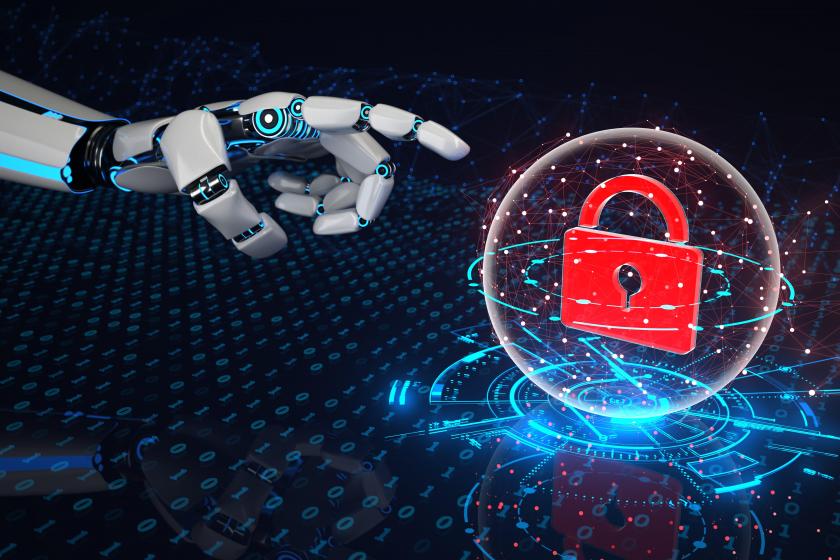AI Enables New Cyber Threats. Are You Ready?AI Enables New Cyber Threats. Are You Ready?
While AI's benefits assist businesses, it opens the door to additional cyber threats, challenges, and risks that organizations must acknowledge.
January 25, 2024

The rise of artificial intelligence (AI) and its growing use has sparked a revolution. Many businesses are captivated and eager to leverage AI's endless possibilities. However, along with AI's merits, we cannot ignore its potential risks as a new array of cyber threats emerge when intricate AI algorithms cross paths with malicious cyber elements.
We can harness AI's strengths while safeguarding against its potential pitfalls, which range from AI-powered phishing schemes to ultra-realistic deepfakes. As such, the key to safeguarding the enterprise is understanding these new threats.
AI’s Cyber Threats and Challenges
While AI's benefits assist businesses, it opens the door to additional cyber challenges and risks that organizations must acknowledge. Some of these new risks and tactics include:
AI-powered phishing scams: Sneaky cybercriminals employ AI-driven chatbots to create impeccable phishing emails without the usual red flags, such as grammar errors, exploiting even the most vigilant. To bolster your defense, exercise caution with emails from unfamiliar sources. Scrutinize sender details, avoid suspicious links, and employ anti-phishing tools for added protection.
Malicious AI-generated code: Cybercriminals harness AI tools for swift code generation, surpassing manual capabilities. These generated code snippets find their way into malware and other malicious software. Strengthen your defenses through layered security measures, such as firewalls, antivirus software, automated patch management, and employee education.
Deepfakes and impersonations: AI-generated deepfakes can propagate misinformation, deceiving unsuspecting individuals and leading to fraud or character defamation. Malicious actors can create ultra-realistic videos using another person's voice and image samples. Identifying deepfakes necessitates a discerning eye. Among other factors, anomalies in skin texture, blinking patterns, and facial shadows help distinguish genuine content from manipulated content.
NIST Issues a Warning
Earlier this month, the National Institute of Standards and Technology (NIST), along with industry collaborators, warned about another type of AI cyber risk called adversarial machine learning threats.
They noted that malicious actors might attempt to deliberately confuse or even poison AI systems to make them malfunction or work incorrectly. For example, a malicious actor might try to subvert a model's training by introducing corrupt data.
Another potential risk is an evasion attack, where someone tries to change how an AI system works after deployment. They cited an example of creating confusing lane markings to make an autonomous vehicle steer off the road.
Combatting AI Cyber Threats
Traditional cyber technologies and practices (e.g., firewalls and antivirus solutions) are insufficient for new AI cyber threats. Cyber security is a mindset, and a proactive approach with the right IT partner is the first step.
Businesses with traditional cyber security training and certifications must keep pace with the new threats, such as the AI ones mentioned above, and new techniques to battle them.
Certifications that help in many of these areas include Certified Ethical Hacker (CEH), Certified Information Security Manager (CISM), Certified Information Systems Security Professional (CISSP), and Certified Information Security Auditor (CISA). Additionally, there need to be people with cloud and security certifications in Amazon, Azure, and Oracle. One quick way to address the complexity and gain the needed expertise is to leverage a pool of talent through your partner.
A Final Word About AI Cyber Threats and Security
The growing widespread use of artificial intelligence represents two distinct cyber security challenges. AI gives malicious actors access to powerful tools and ways to develop new techniques to attack enterprise networks. The tools can also be used to conduct increasingly sophisticated and hard-to-detect social engineering attacks, making it easier to trick employees into taking actions that expose the organization to problems.
Additionally, using AI requires system changes and, if not implemented carefully, can introduce new vulnerabilities.
The bottom line is that companies need to be aware that AI introduces new security challenges, and the best way to protect your organization is to adopt a robust security posture.
Jacqueline Herb is a contributing writer and frequent speaker on cybersecurity and managed service providers.
Related articles:
About the Author
You May Also Like




